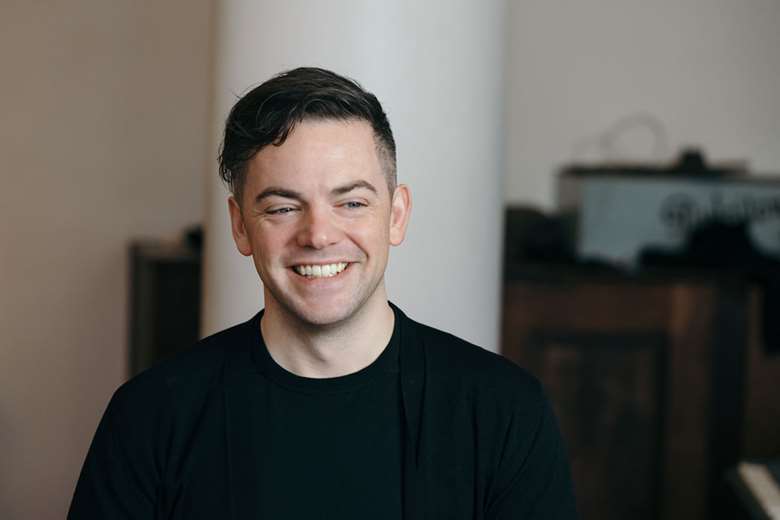Nico Muhly is focus of new Sadler's Wells Composer Series
Sarah Kirkup
Thursday, September 19, 2019
The American composer is excited to follow in the footsteps of Turnage and Adès with a programme of dance inspired by his music, he tells Gramophone

Sadler’s Wells is continuing its acclaimed Composer Series with a programme of works danced entirely to the music of Nico Muhly. The triple bill, to be performed at the London venue in March next year, features two existing works by the American composer – The Only Tune (2007), his dark folk-song arrangement of murder ballad The Two Sisters, and Drones (2009-12), evoking ‘the constant humming found in most dwelling places’ – plus a brand new piece commissioned by New York City Ballet.
The London dance venue launched its Composer Series eight years ago, its aim being to stimulate and develop the bond between the two art forms. ‘We wanted to challenge choreographers to respond to the music of living composers by making new work,’ explains Artistic Director Alistair Spalding. ‘I am excited to see where the inspiration drawn from the music takes each dance maker, and how they reveal the qualities of the music itself.’
The first project, in 2011, was ‘Undance’, a cutting-edge collaboration between Mark-Anthony Turnage and Wayne McGregor, while the second instalment in 2014, ‘See the Music, Hear the Dance’, drew on the music of Thomas Adès: four diverse compositions, all originally intended as stand-alone pieces – including Polaris for a 70-strong orchestra – were used by four different choreographers and performed live by the Britten Sinfonia, conducted by Adès himself.
Now, six years later, Muhly becomes the welcome focus. He has already worked extensively in the dance world – he is a frequent collaborator with Benjamin Millepied, and his arrangement of Byrd for Wayne McGregor’s Machina (2012) features on the British composer’s new album ‘Collaboration’, just released – because, as he tells Gramophone, dance is a medium in which he thrives: ‘I’m an eager collaborator and interested in learning about the way dance functions,’ he says, ‘and this makes these projects fun and just the right amount of challenging.’
The most anticipated part of the Sadler’s Wells programme will be the new commission, choreographed by NYCB’s Resident Choreographer Justin Peck and to be performed by 12 dancers from the company – marking its first appearance in London since 2008. Working with Peck has been a long time coming, says Muhly: ‘I think I’m the only one of my friends who hasn’t written a ballet with Justin,’ he jokes. ‘I swear the postman has written a miniature, and my fishmonger has collaborated with him on a one-off in Nantucket. I’ve known his work forever, and I’m trying to write him music which will cause him to react with a sense of familiarity and surprise.’
As for defining the qualities of his music that choreographers are attracted to, Muhly doesn’t feel it’s his place to say, particularly as he’ll often find that music of his that wasn’t intended for the stage ‘can make unexpectedly beautiful music for dance’. (In this respect, it will be interesting to see his reaction to the two other works on the 2020 programme: The Only Tune, to be sung live by Sam Amidon for whom it was written, is being choreographed by Sadler’s Wells Associate Artist Michael Keegan-Dolan and performed by the Teaċ Daṁsa founder’s own dancers; the choreographer for Drones is New Wave Associate Julie Cunningham, and their eponymous company will perform it.)
But when it comes to the NYCB commission, he already has a clear idea of how it will sound and therefore what Peck is likely to draw upon (although, as he explains, ‘the way I perceive rhythm can oftentimes make sense on paper and then require reframing when bodies and space are involved’): for this new score, Muhly is promising ‘fast, rhythmic music with “folded” content, where two or three things are happening at the same time. There is room for the dance to work against, as well as within, the music.’ He also confides that the vibraphone will feature heavily, at least in the slow section of the score.
As for the shifting perceptions of music in dance – its elevation from accompanying role to movement catalyst and much more besides – Muhly believes dance audiences are more open-minded than they’re often given credit for, and that the most important job of any dance composer is simply to start working with choreographers as soon as possible. ‘I've learnt so much about my own craft and my own limitations and strengths through these collaborations’, he says. ‘If you start off on equal footing, the work doesn’t naturally make an unhelpful hierarchy.’
Sadler’s Wells spring season is now open; tickets, including those for Muhly’s programme in March 2020, are available to the general public from October 14 at www.sadlerswells.com






